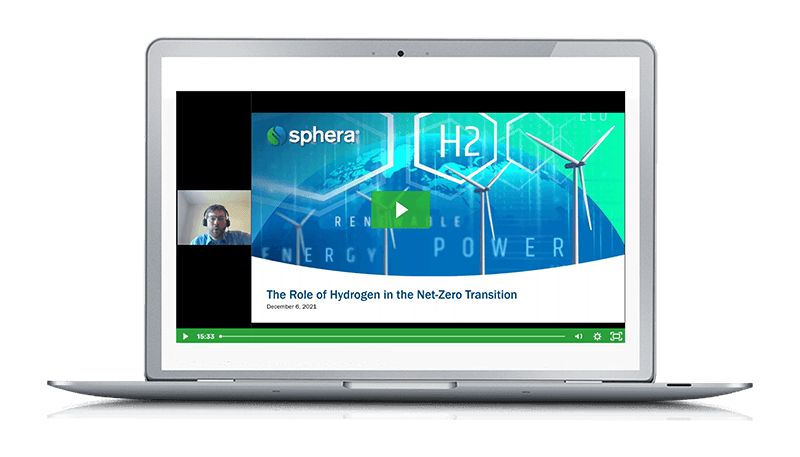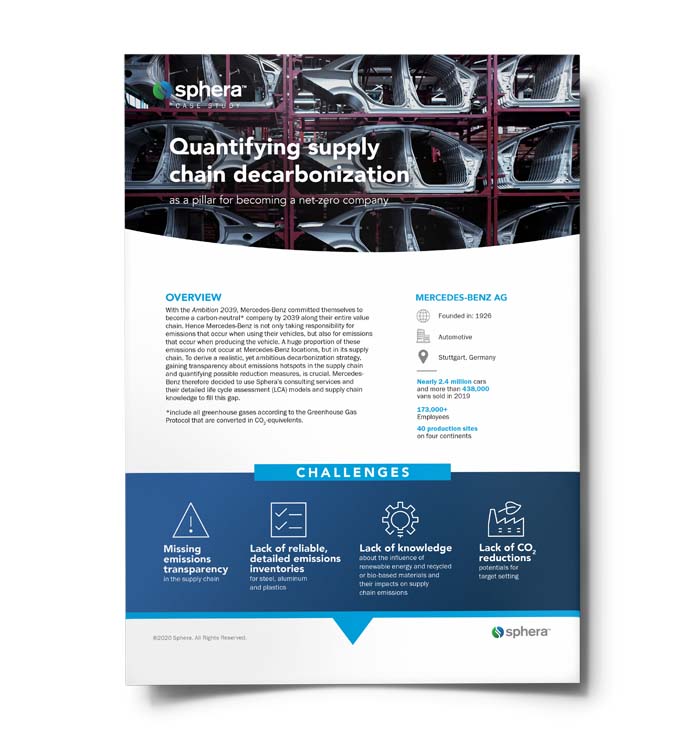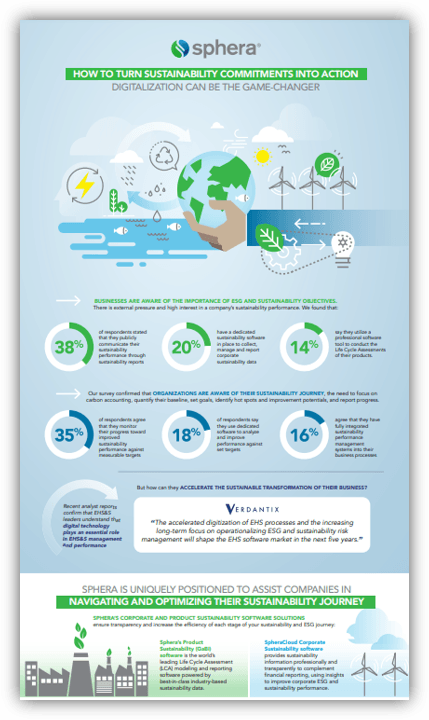UPDATE (September 19, 2023): On September 14, the European Commission (EC) opened a targeted consultation and a public consultation for the Sustainable Finance Disclosure Regulation (SFDR). The comment period will remain open until December 15, 2023.
The targeted consultation seeks input from public bodies and stakeholders who are more familiar with the SFDR, including financial market participants, investors, non-governmental organizations, public authorities and national regulators. These stakeholders can comment on the SFDR through a survey accessed through this page.
The public consultation aims to collect feedback and input from individuals and organizations with general knowledge of the regulation. These individuals and groups can comment through a survey by visiting this page.
The Commission will use feedback from the consultations to understand how the SFDR is working in practice and to identify any issues that reporting organizations and other stakeholders have experienced in complying with the regulation. In particular, the Commission wants to understand how the regulation interacts with other components of the EU’s sustainable finance framework and whether any aspect of the disclosure requirements should be changed.
For those who wish to comment but are not able to access or use the online survey, comments may be submitted to the following email address: fisma-sfdr@ec.europa.eu.
###
UPDATE (April 19, 2023): Managers of Article 8 and 9 Funds should be on the lookout for possible changes in disclosure requirements under the Sustainable Finance Disclosure Regulation (SFDR). The European Supervisory Authorities (ESAs) recently published a joint consultation paper on possible changes in the SFDR regulatory technical standards (RTS), also known as Level 2.
ESAs have proposed changes that include (but are not limited to):
- An extended list of social indicators for principal adverse impacts (PAIs).
- Amendments related to decarbonization targets (referred to as greenhouse gas emissions reduction targets).
- More specific requirements for “do no significant harm” (DNSH) disclosures.
The ESAs welcome comments on these proposed changes. Comments can be made using the response form on the European Securities and Markets Authority (ESMA) website, and they must be submitted by July 4, 2023.
###
UPDATE (March 10, 2023): Fund managers are now expected to use revised disclosure templates for the Sustainable Finance Disclosure Regulation (SFDR). The disclosure templates are part of the Commission Delegated Regulation (EU) 2023/363, which went into force on February 20 this year. The regulation contains amendments for the regulatory technical standards (RTS) presented in Delegated Regulation (EU) 2022/1288.
Delegated Regulation (EU) 2022/1288 provides the details of the content and the presentation of information in relation to the SFDR’s guiding principle of “do no significant harm.” The content, methodologies and presentation of information associated with sustainability indicators and adverse sustainability impacts are also specified, as well as the presentation of information in pre-contractual documents, on websites and in periodic reports as it relates to the promotion of environmental or social characteristics and sustainable investment objectives.
The amendments relate to information provided on investments in fossil gas and nuclear energy activities. They essentially mean that fund managers must now disclose whether a fund is investing in environmentally sustainable activities involving fossil gas and/or nuclear energy. Fund managers are expected to immediately begin using the revised disclosure templates.
###
ORIGINAL ARTICLE (August 11, 2022): Do no significant harm: This principle underlies the EU’s sustainable finance framework. And—to the dismay of those who agonize over acronyms—the principle is so deeply embedded in sustainable finance that its acronym (DNSH) is widely used.
The EU’s sustainable finance framework includes the Sustainable Finance Disclosure Regulation (SFDR), which applies to financial market participants (FMPs) and financial advisers (FAs), as well as the Corporate Sustainability Reporting Directive (CSRD), which applies to large and listed companies.
Recent months have seen much activity around these frameworks, including the release of proposed European Sustainability Reporting Standards and rules under the CSRD. SFDR-related developments include the July publication of Regulatory Technical Standards (RTS). Both the CSRD and the SFDR, which we cover in this piece, are built on the principle of do no significant harm.
The European Green Deal: A Foundation for a Sustainable Economy
The SFDR emerged from the European Green Deal, which encompasses European Commission policy and legislative proposals that are designed to make the EU carbon-neutral by 2050. It lays the roadmap for a sustainable economy and positions sustainable objectives squarely at the core of EU policy.
In creating this roadmap, European legislators agreed that financial market participants and financial advisers must participate in building a sustainable economy. The European Parliament and Council explain why:
“As the Union is increasingly faced with the catastrophic and unpredictable consequences of climate change, resource depletion and other sustainability‐related issues, urgent action is needed to mobilise capital not only through public policies but also by the financial services sector. Therefore, financial market participants and financial advisers should be required to disclose specific information regarding their approaches to the integration of sustainability risks and the consideration of adverse sustainability impacts.”
But the European Parliament and Council realized that varied approaches to sustainability reporting throughout the EU would present a problem: “Such divergent measures and approaches would continue to cause significant distortions of competition because of significant differences in disclosure standards.”
The solution is the SFDR—REGULATION (EU) 2019/2088—which was published in November 2019. It provides visibility into financial market activity and compels market participants and financial advisers to support the EU’s transition to a sustainable economy.

Fund Categorization Under the SFDR
SFDR addresses the need for harmonized reporting standards that apply across the EU. It aims to ensure that sustainability risks are integrated; adverse impacts are considered; and environmental or social characteristics are accurately presented in a transparent, comparable way.
SFDR helps end-investors understand the impact of investments by organizing financial products in three categories:
- Article 6 funds: Article 6 is the default classification for funds under SFDR; the classification is suitable for funds that don’t integrate sustainability into the investment process.
- Article 8 funds: These are funds or financial products that promote environmental and / or social characteristics and are tied to companies that follow good governance practices. They are also known as “Light Green Funds.”
- Article 9 funds: Also referred to as “Dark Green Funds,” these financial products have sustainable investment or a reduction in carbon emissions as their objective. Like Article 8 Funds, these must also incorporate good governance into the investment strategy.
In March of this year, Goldman Sachs reported that “SFDR funds” are outperforming their non-ESG counterparts: “Flows into Article 8 & 9 funds have significantly outpaced non-ESG, despite the latter representing nearly 2x the number of funds.”
The Breakdown: SFDR Level 1 and Level 2 Disclosures
SFDR disclosures are broken down into Level 1 and Level 2 disclosures. Level 1—or entity-level—disclosures require information about how principal adverse sustainability impacts are identified and prioritized by financial market participants. FMPs are also required to describe actions they take in relation to adverse sustainability impacts; responsible business conduct codes and due diligence standards; and how potential conflicts of interest are handled.
SFDR requires the disclosure of detailed, transparent information through Regulatory Technical Standards (RTS)—also referred to as “Level 2 RTS.” The standards specify the details of content, the presentation of information and, where relevant, methodologies as they relate to:
- the do no significant harm principle
- sustainability indicators and adverse sustainability impacts
- the promotion of environmental or social characteristics and sustainable investment objectives in “precontractual documents, on websites and in periodic reports”
Level 2 disclosures cover 64 quantitative ESG metrics. These indicators fall into categories such as greenhouse gas emissions, biodiversity, water, waste, and social and employee matters.
The European Commission presented the RTS in a delegated regulation in April. The July publication of the RTS in the Official Journal of the EU essentially provides FMPs and FAs with greater certainty around the disclosures that will be required of them. Level 2 RTS will apply from January 1, 2023.
Better Information Yields Informed Decisions
As intended by the EU’s sustainable finance framework, SFDR standards provide end-investors with transparent and comparable information to help them assess the sustainability performance of financial products. The information supports their ability to make informed decisions that ensure their investments do no significant harm.










